As a gateway between Europe and the Holy Land, Rhodes was a hotbed of activity during the Medieval Crusades. At one point, for nearly 200 years, Rhodes was a sovereign state under the rule of the Knights of the Order of St John (also known as The Hospitallers). The small island of Rhodes was a key Christian stronghold for merchants and crusaders alike, bringing many riches and skills to the area. In fact, both Richard the Lionheart (1189) and Philip II of France (1192) stopped at Rhodes on their way to and from the Holy Land.
Fast forward to today, and you can see why it’s easy to fall in love with the history of Rhodes. The buildings erected by the Knights still dominate the city. The Old Town feels like walking back in time because the majority of the Medieval Town of Rhodes is pure pedestrian traffic only (no motorized vehicles allowed).
Layton and I explored the Medieval Town of Rhodes for a day. We started early but walking along the cobblestone streets, looking up at medieval castles, and exploring the old living quarters of knights long gone, made for a fantastic day exploring the UNESCO World Heritage Centre.
In the map below, I’ve marked the key places we explored to make things a little easier for you when planning your next trip to Rhodes.
The City Gates
Out first stop of the day was The Red Door Gate. Being a city surrounded by walls, there are A LOT of gates. Each gate brings about a unique charm as you walk in and out of the security wall.
It is easy to walk along the inside or outside of the wall surrounding the Old City. We were able to see The Red Door Gate, The Gate of St. Athanasius, and The Gate of St. Antonios. However, we missed a few (like The Gate of St. John, The Gate D’Amboise, and The Freedom Gate).
As you walk outside the city wall, you can’t miss the massive dry moat surrounding the city. Imagine it being full of water, and you can quickly see why the fortress of Rhodes was hard to attack. Now, the dry moat bed serves as walking and running paths for locals and tourists alike.
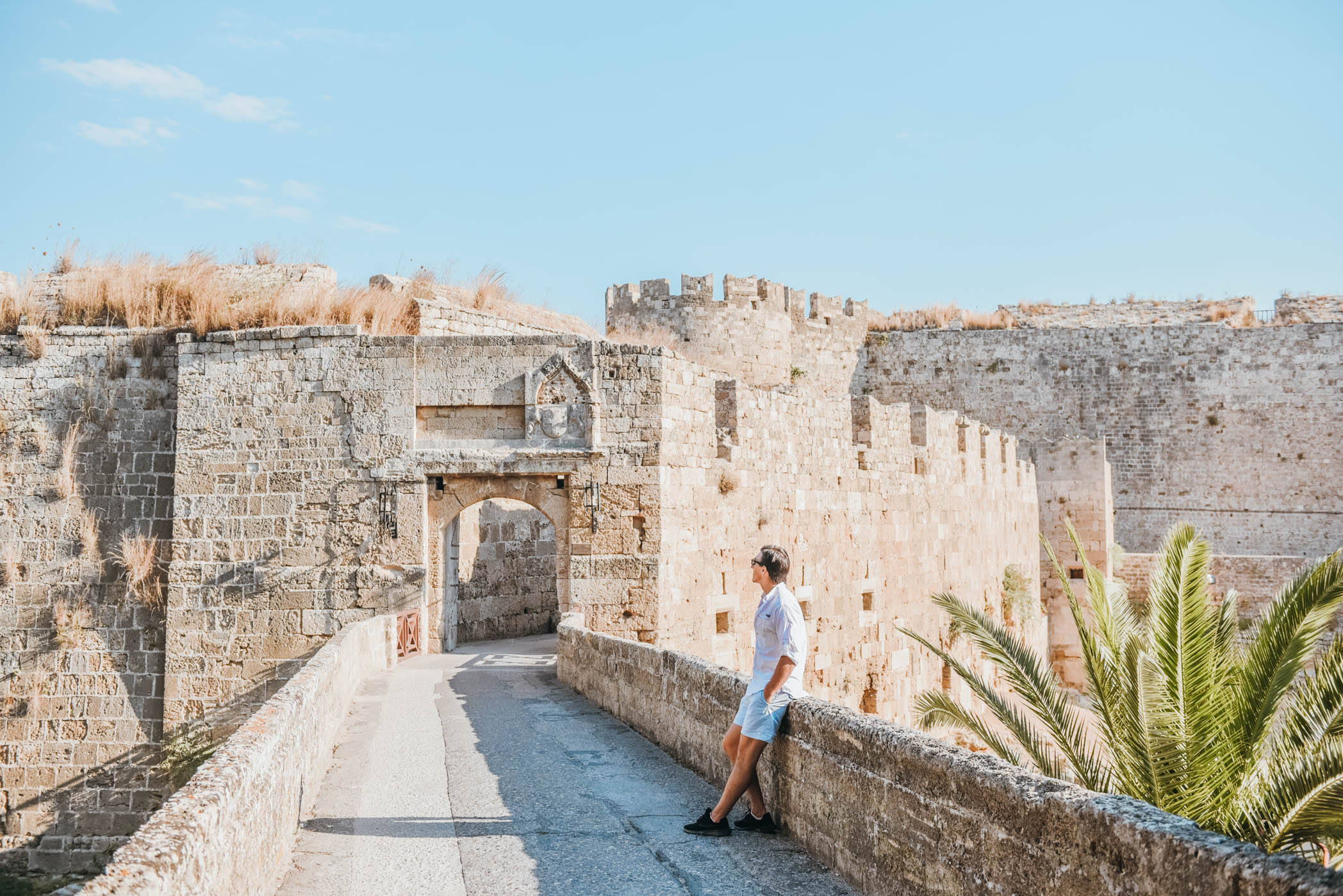
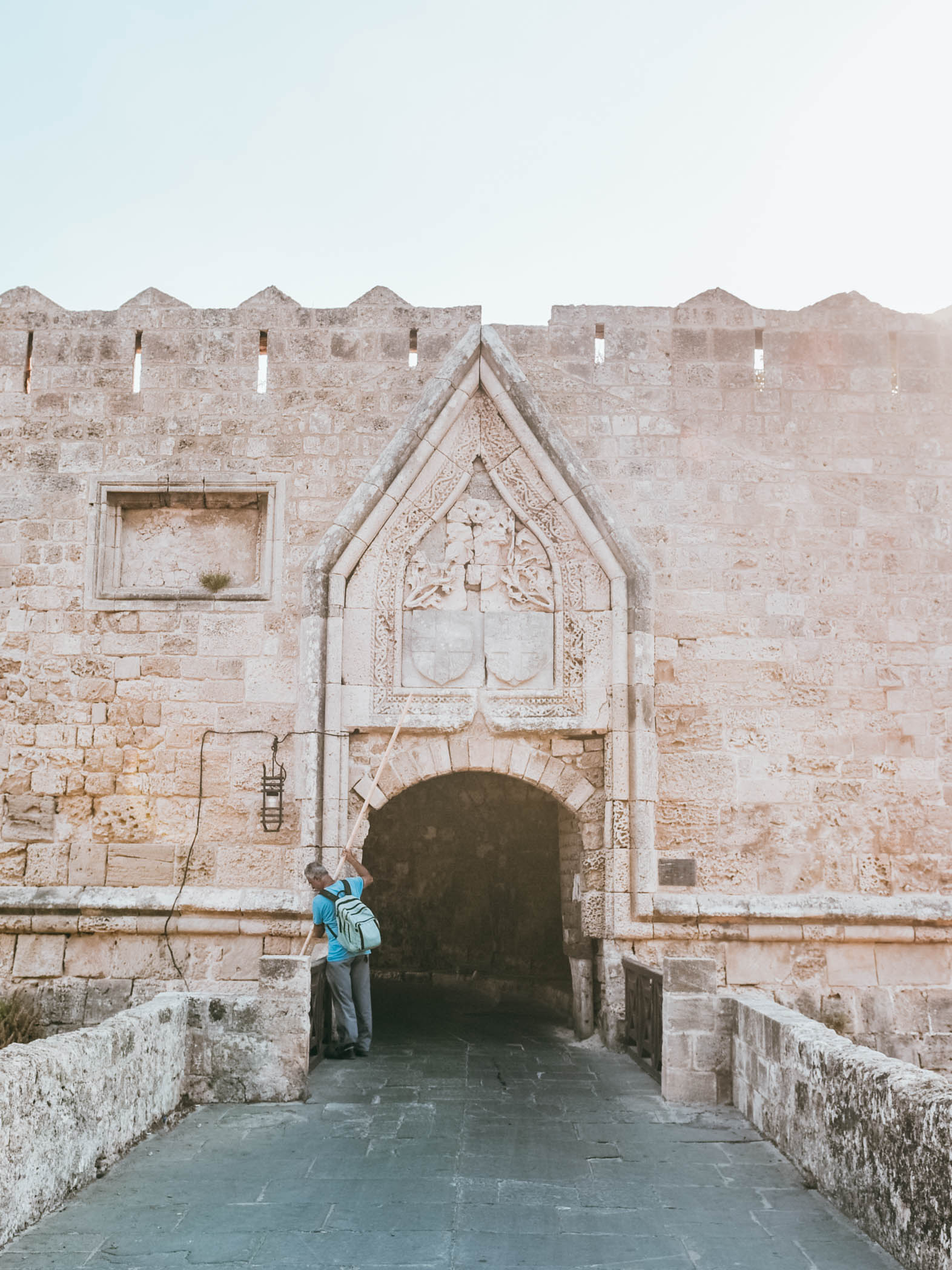
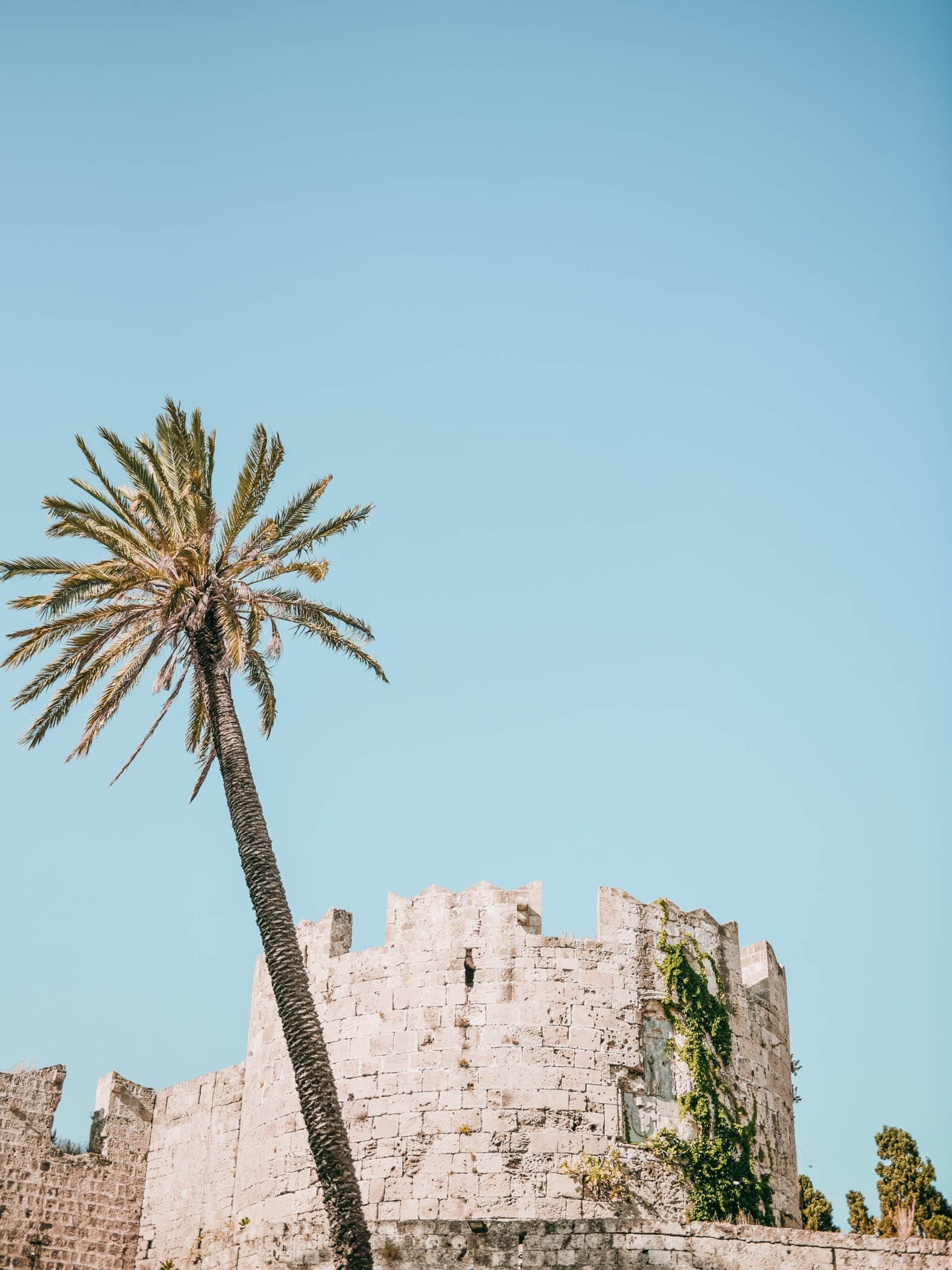
Street of the Knights
One of the most famous areas inside the Medieval City of Rhodes is the Street of the Knights of Rhodes, leading up to the Palace of the Grand Master of the Knights of Rhodes.
This medieval street is lined with medieval “inns” built for the knights crusading with the Order of the Knights of St John. The Order was organized into seven “tongues”, each having its own seat, or “inn”. The inns of the tongues of Italy, France, Spain, and Provence lined the famous Street of the Knights on both sides -one of the finest testimonies to Gothic urbanism in the modern world. In order to protect the city, the seven tongues each were responsible for guarding a specific area of the wall, which they did successfully for more than 200 years.
Walking along this street in Rhodes Old Town, you can’t help but think back to the armor-clad knights walking right where you are just a few hundred years ago. If you are lucky, some of the old “inns” will be open. Today, they serve a variety of purposes (from art studios to government offices). We were lucky that the old France Inn was now an art studio that allowed tourists to visit for free. The insides of these buildings are just as remarkable and unforgettable as the outsides.
Tip: If you’re looking for this street on a map, it is called Ippoton.
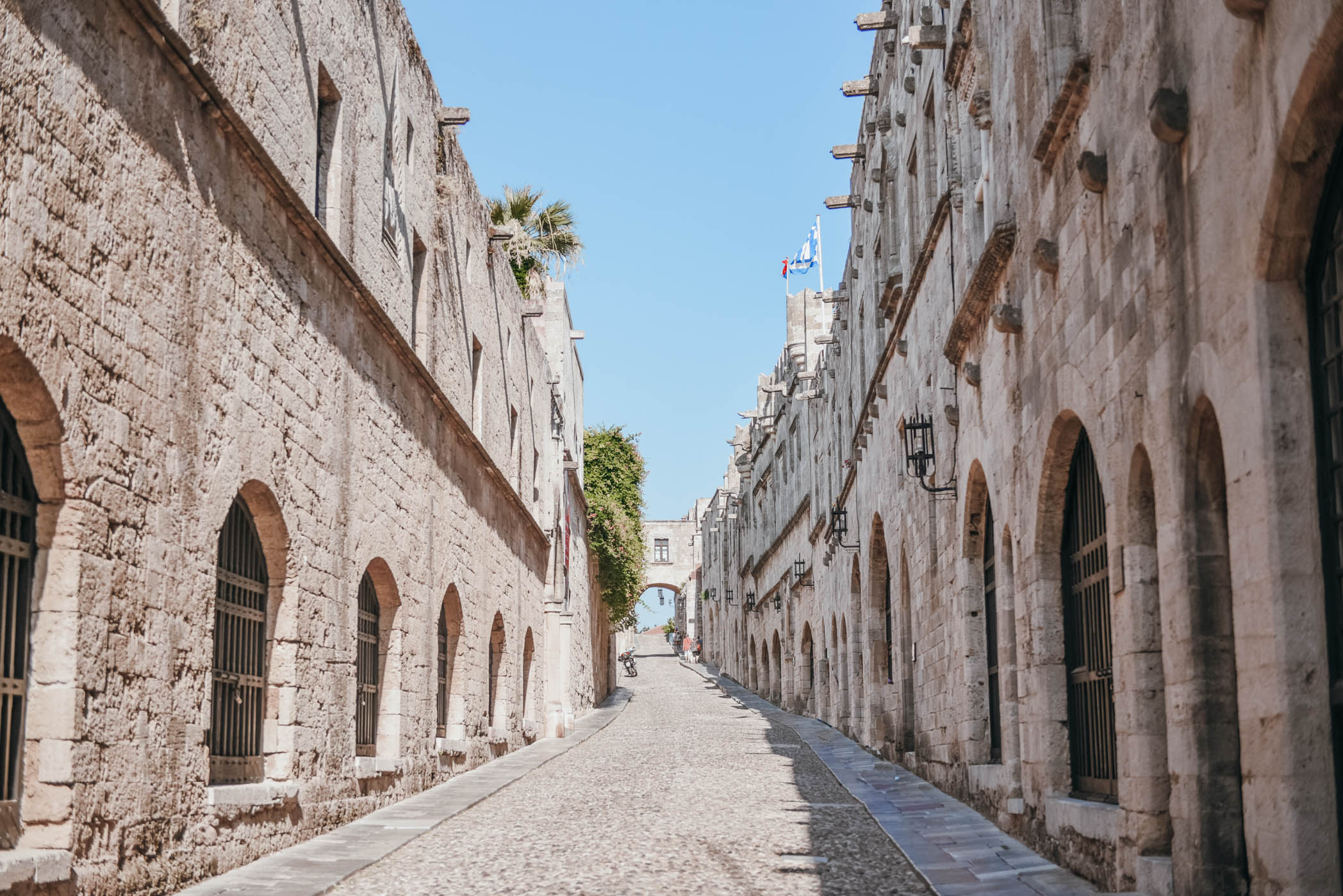
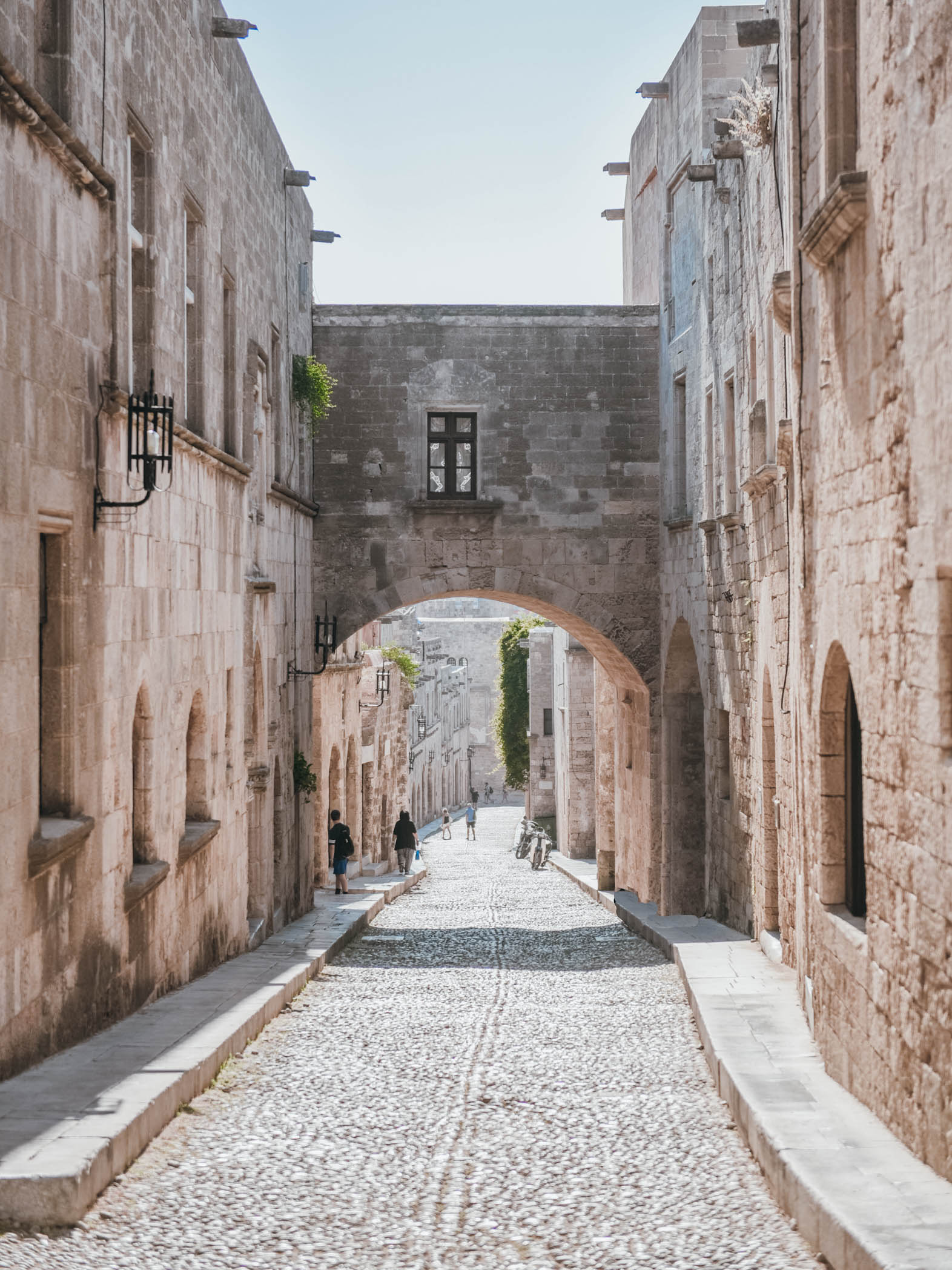
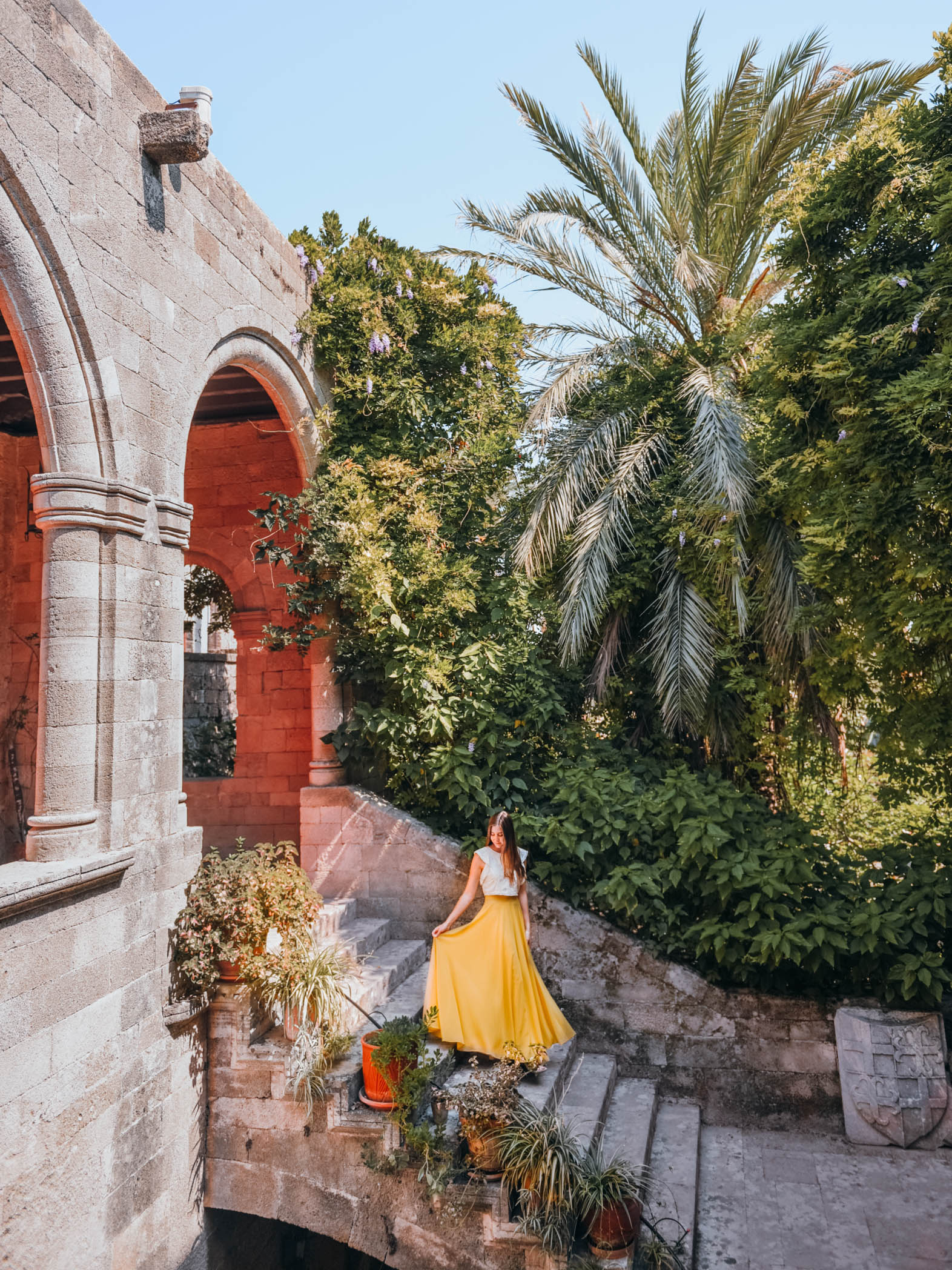
Palace of the Grand Master of the Knights of Rhodes
Probably one of the coolest architectural structures we visited during our Mediterranean trip was the Palace of the Grand Master of the Knights of Rhodes.
According to a recent study, it was built on the foundations of an ancient temple to the Sun-god ‘Helios’, and probably that was the spot where the Colossus of Rhodes stood back in the Antiquity times period. The castle itself was originally a Byzantine fortress, which later housed the administrative center of the Order of Knights. It is one of the few examples of Gothic architecture in Greece. From the high towers, you can see miles into the sea and the surrounding countryside, making it an excellent headquarters for a group of crusading knights.
Nowadays, the ground floor holds two large exhibits about the city of Rhodes. It doesn’t cost much to do a tour of both the large exhibits on the ground floor and the insides of the castle itself. I highly suggest it. Not only will you get an even more in-depth history lesson on Rhodes from the exhibits, but the insides of the castle are not to be missed. You can explore on your own or with a tour group. Either way, don’t miss the amazing floor mosaics, large rooms full of knight “lockers”, and halls including the large hall of the Council, the Knights’ dining hall, and private chambers on the upper floor in Rhodes Old Town.
Open: 8:00 – 20:00 (April – October) / 8:00 – 15:00 (November – March)
Tickets: €6 or you may purchase a special ticket package for €10, which includes entrance to the following: Grand Masters’ Palace, Archaeological Museum, the church of Our Lady of the Castle, and the Decorative Arts Museum.
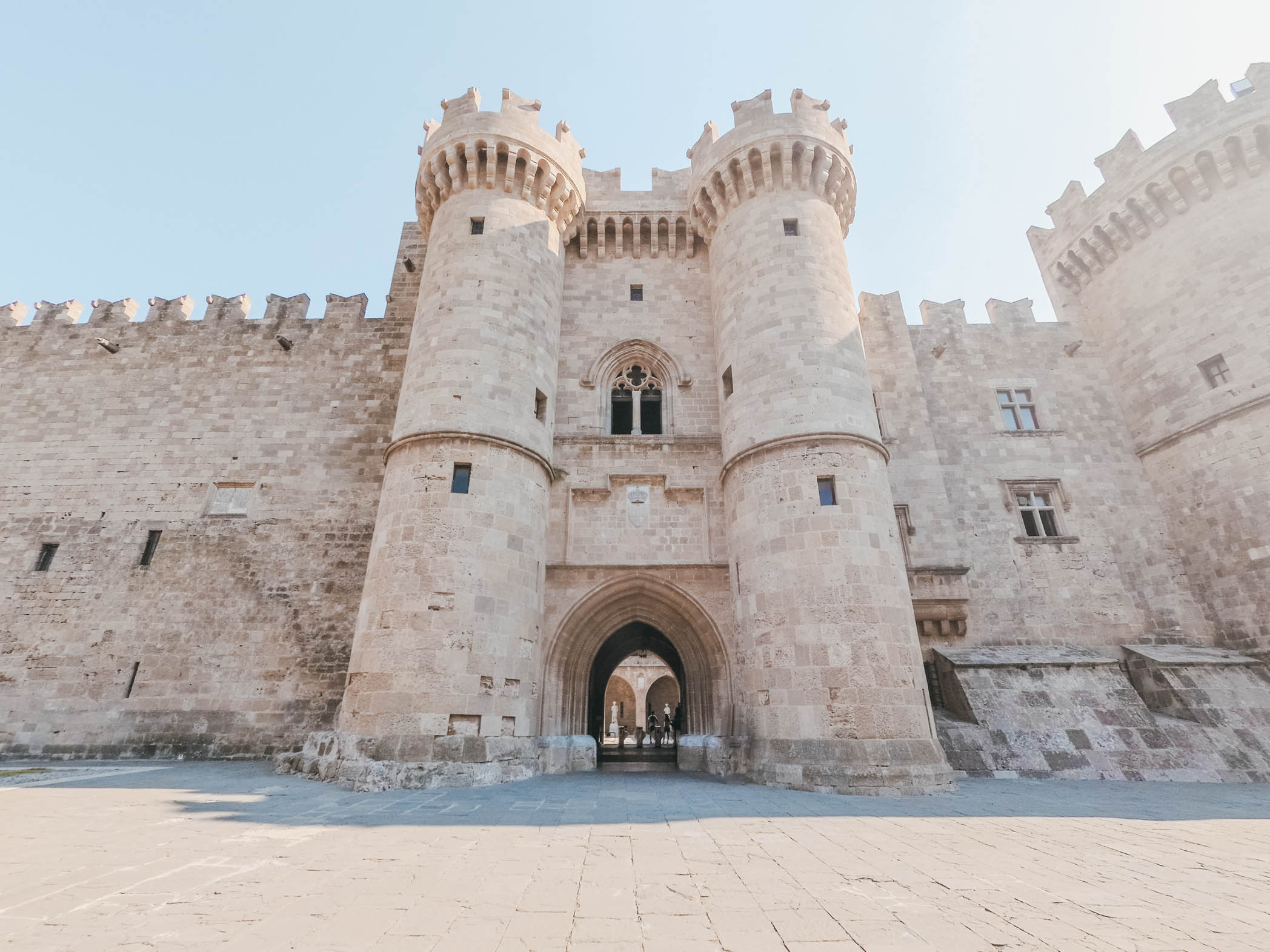
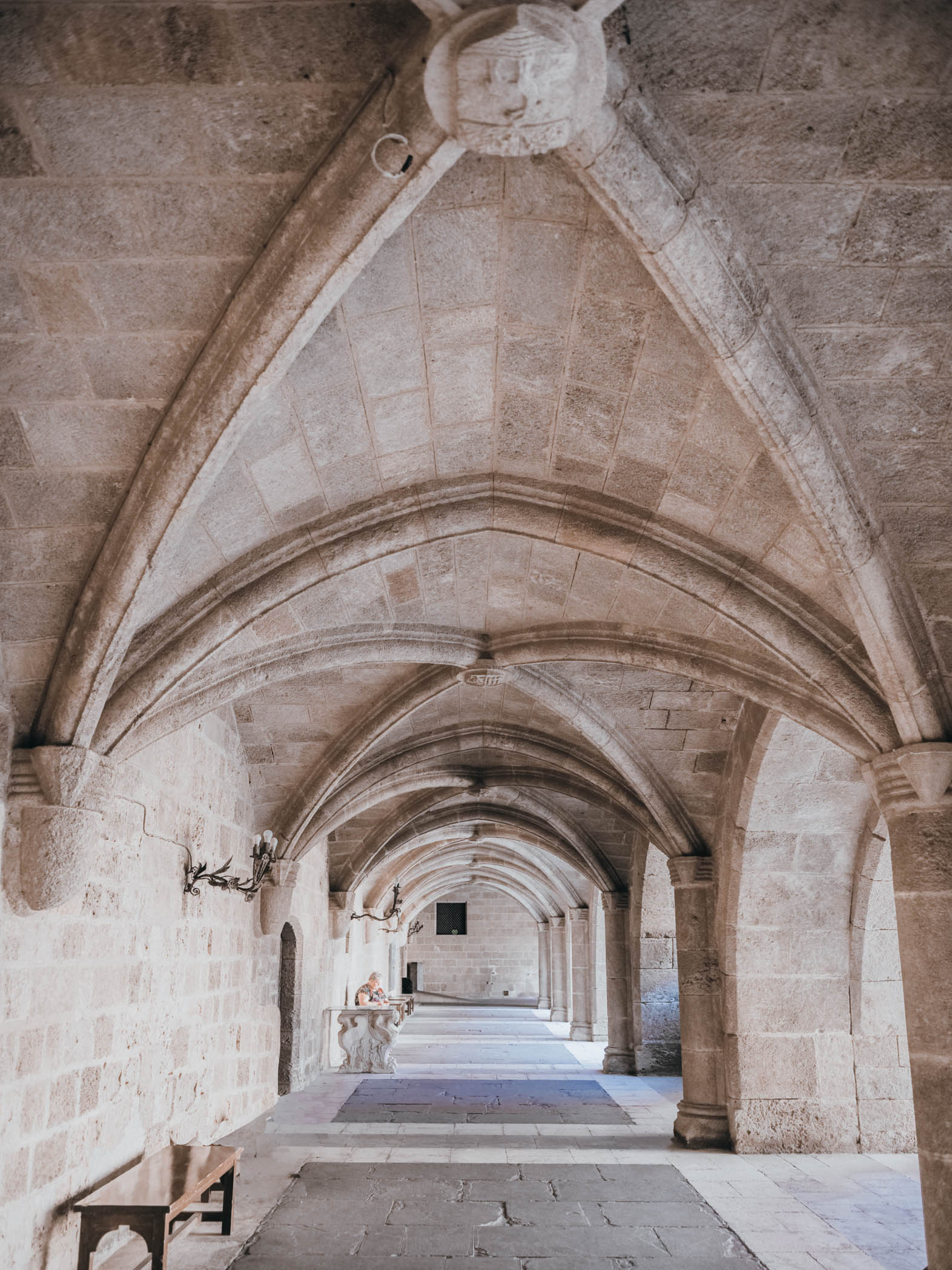
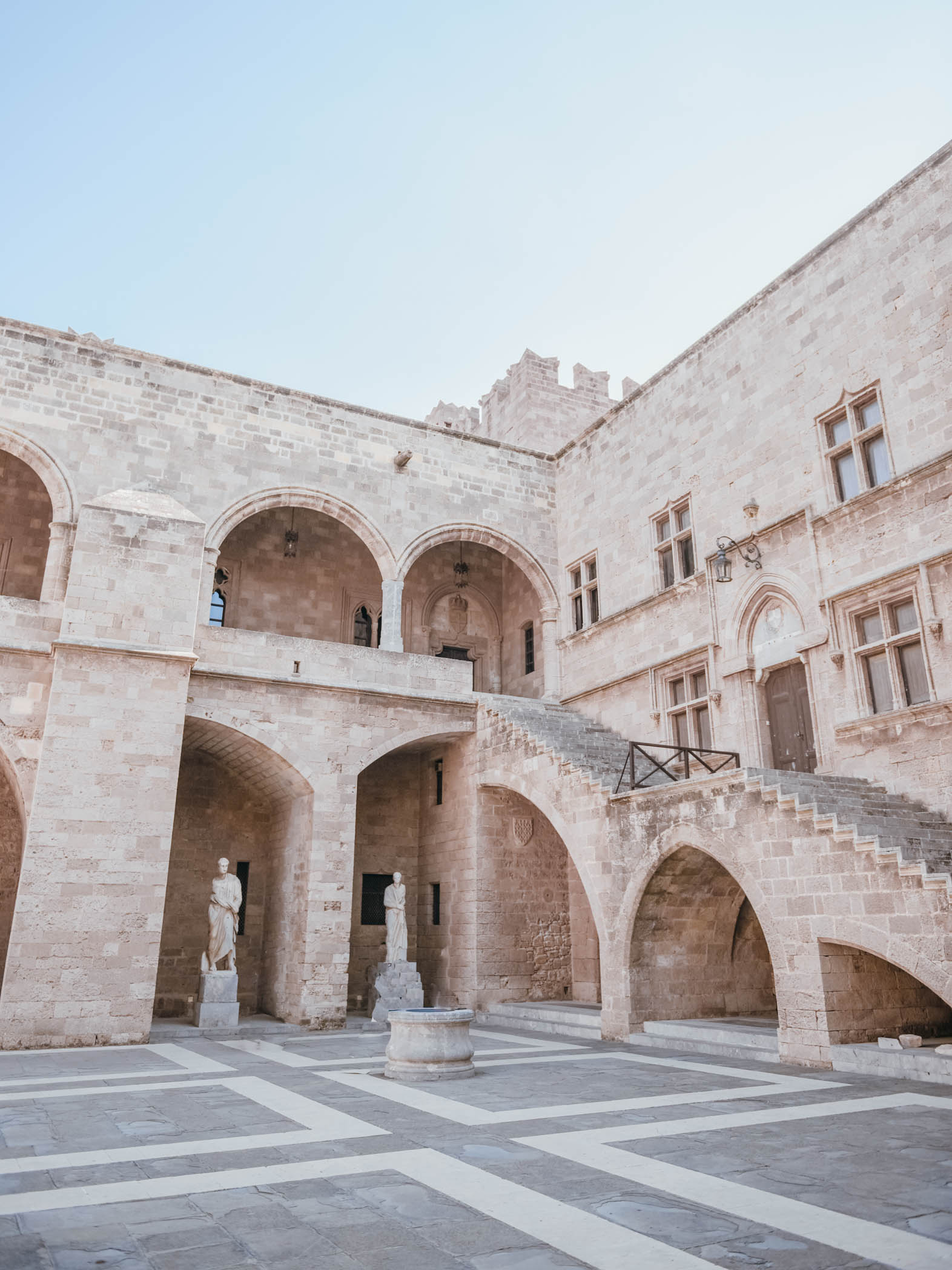
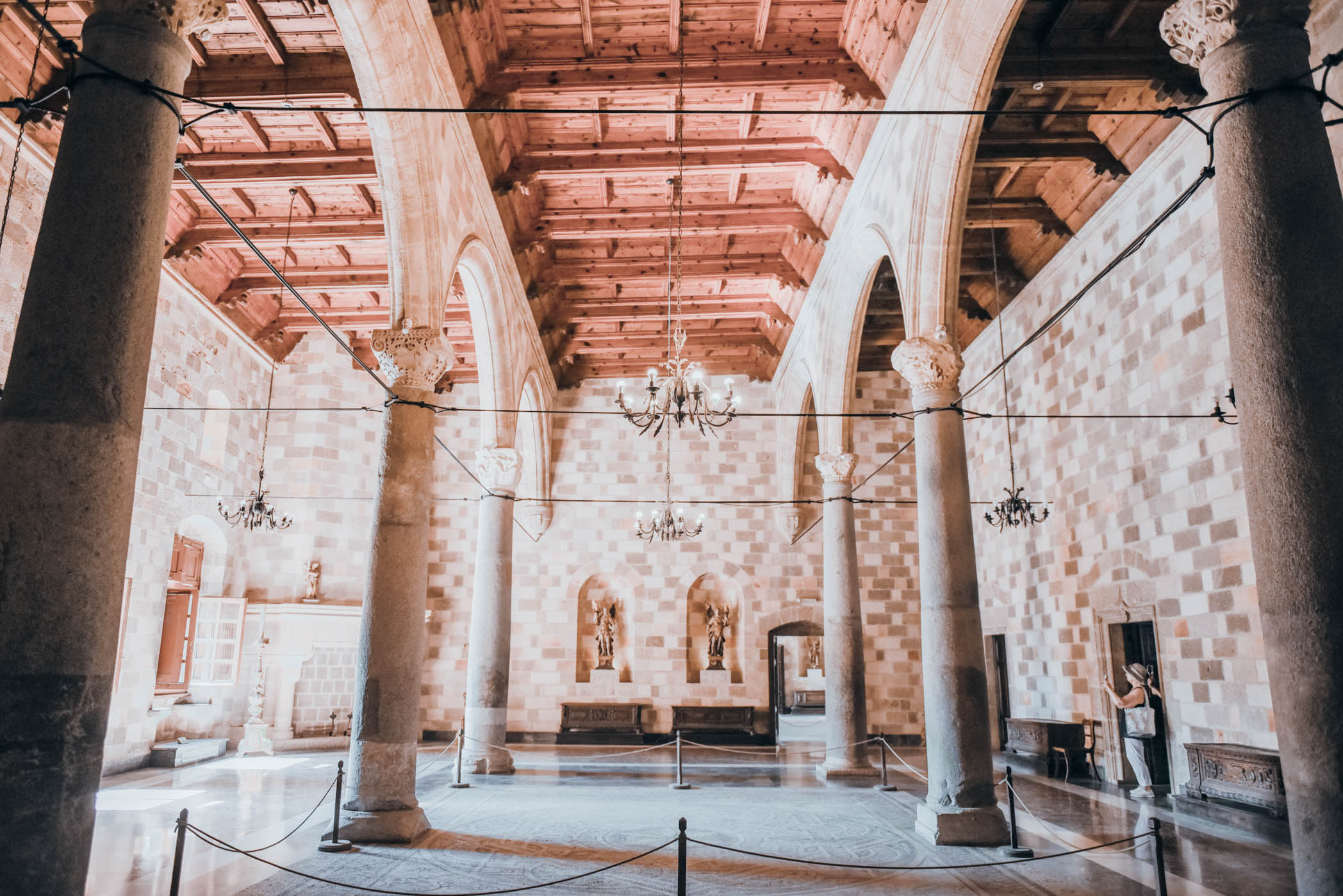
Argyrokastro Square and the Decorative Arts Museum of Rhodes
Argyrokastro Square, or Square of the Hebrew Martyrs, is one of the most picturesque places in Rhodes Old Town.
As you stand in the medieval square with flowers climbing up the buildings and water flowing from the well in the center, you feel like an extra in a Game of Thrones scene. By itself, it isn’t much, but with a little imagination, it can become a new world.
I would recommend getting here early in the day to snag a great picture. The square does tend to get full around midday with tourists walking by and stopping to top off their water bottles.
We did not go inside the museum, but if you like to see various designs on ceramics, you will like this museum. From the reviews I read online, the museum is one big room with rows and rows of decorated plates on the walls and a small section on textiles. However, it was noted that there was a lack of information on the exhibit pieces.
Open: 8:00 – 20:30, Tuesday – Sunday
Tickets: If you purchase the special ticket package for €10 at the Grand MAster’s Palace, that includes your admission.
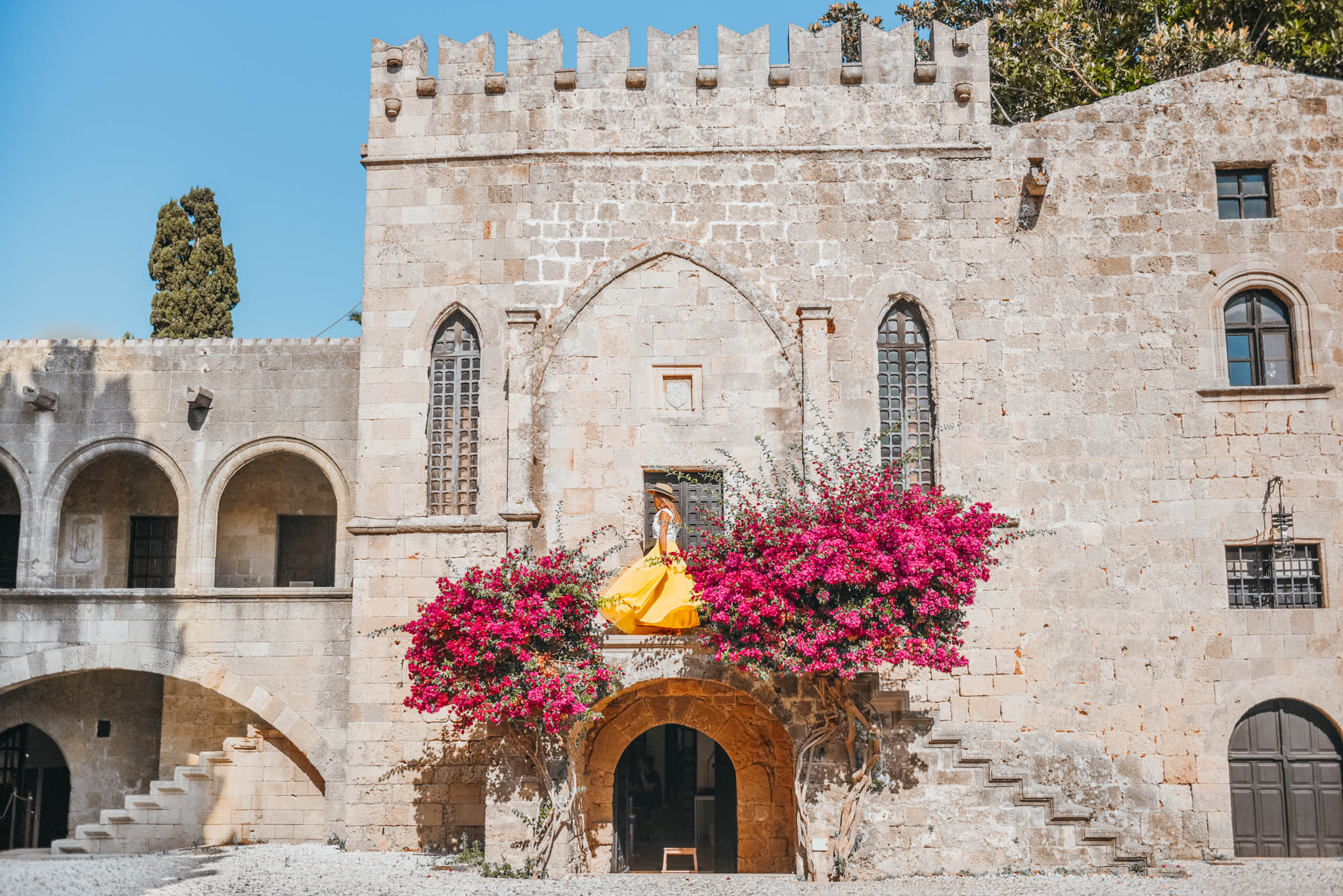
The Mosque of Suleiman the Magnificent
All “great” things must come to an end. Rhodes finally fell in 1522 after a six-month siege carried out by Suleyman II. The Mosque of Suleiman was built to commemorate Suleyman’s conquest of Rhodes. Unsurprisingly, it was the first mosque in the town of Rhodes.
It is easy to spot as the Mosque’s tower peaks above the medieval skyline. Even as you approach by boat, you can quickly pick the Mosque’s pink dome out of the cityscape.
Unfortunately, the mosque is close to the public so if you wish to get a great view of this structure, I recommend going to the top of Roloi Clock Tower.
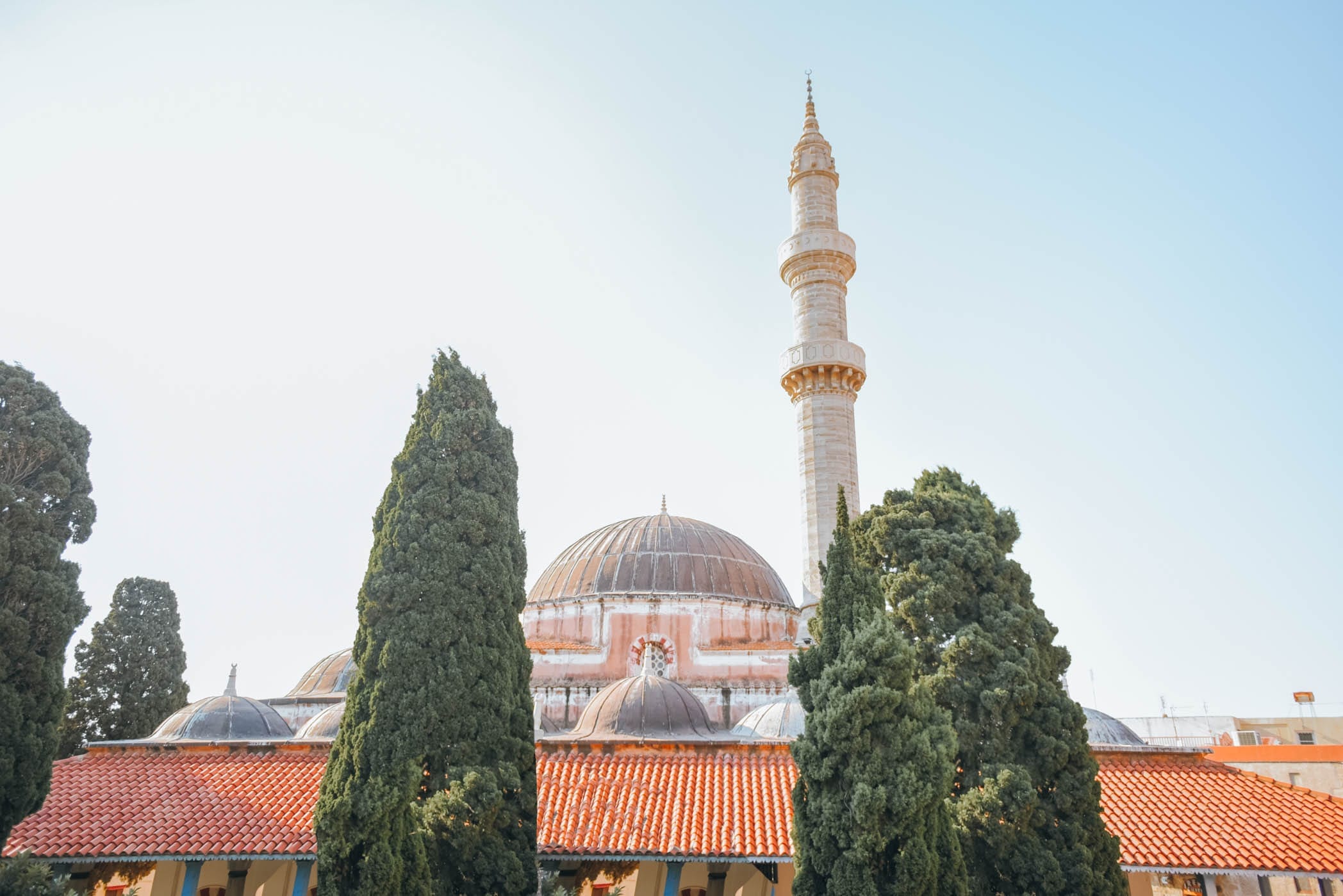
Medieval Clock Tower Roloi
Peering above the city like a watchful eye, this 7th-century tower offers some of the best panoramic views of the Medieval City of Rhodes and the Port of Rhodes. As a bonus, the entrance fee includes a free drink on the terrace below.
Anywhere you walk in the city, you can see this tower. At the change of an hour, you can also hear the clock strike!
Open: 9:00 – 20:00, Monday – Saturday
Tickets: €5
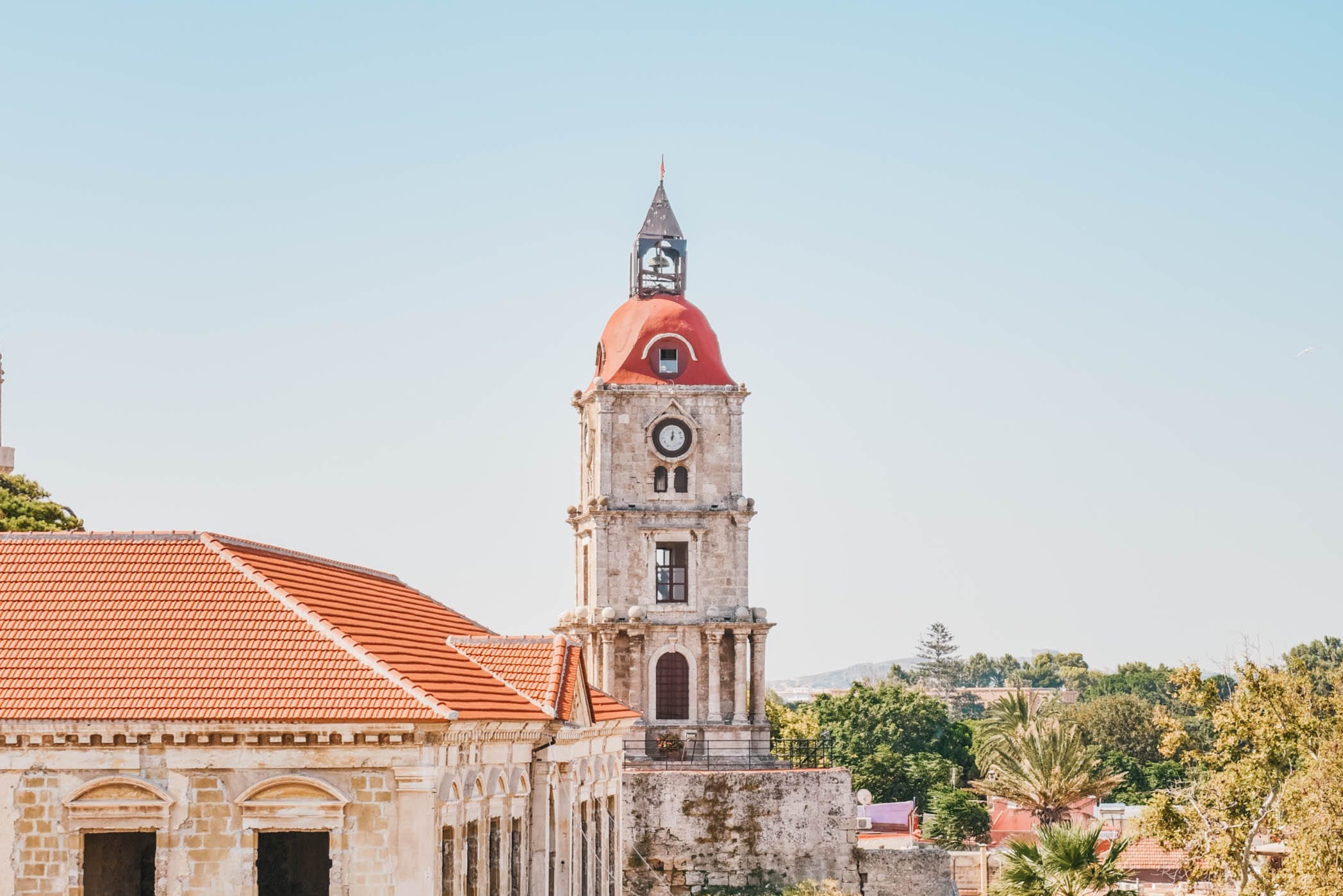
Parko Therme
If you want a postcard picture from Rhodes, just head outside the wall to Parko Therme. We actually had an odd encounter at this park.
When we travel, we take a lot of pictures (duh). Each time we find a new location, we have to figure out who is going to be in the picture and how the picture will be taken. For this particular location, we decided to take a picture of both of us (which means we have to use the tripod). However, whenever we use the tripod, there is a risk of someone running up, grabbing our equipment, and running away. ⠀
When we first entered Parko Therme, I noticed there were a few homeless individuals and other random people hanging around. I didn’t think it would be a problem; however, as we were prepping for this picture, a few people kept creeping closer and closer to us. We finally stopped and just stood there looking at them, so they knew we were watching.
⠀
As I continued setting up the picture, four kids came up and wouldn’t leave us alone. They kept pointing at the camera and whispering. We weren’t in any danger, but the vibes were off, so I didn’t feel comfortable leaving the camera on a timer for pictures. Eventually, Layton yelled at them to scram. As they were leaving, one kid kept pointing his middle finger at us and yelling the F word (one of the few English words he knew). It was slightly entertaining, but concerning at the same time. In the long run, we got the picture of both of us.
⠀
Moral of the story: each picture has a story, and a lot of work goes into each one. Also, be aware of your surroundings around Rhodes Old Town.
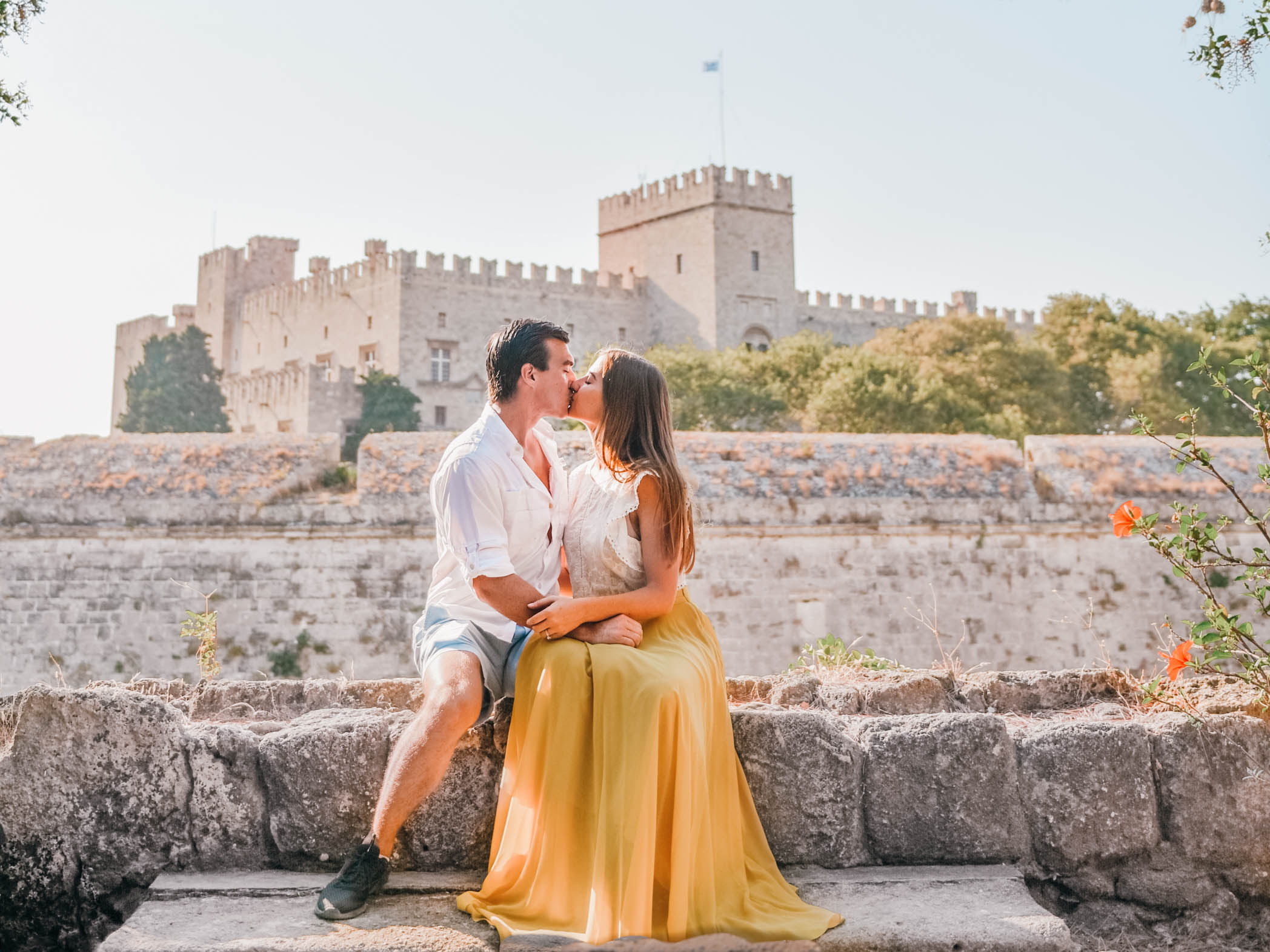
Rhodes Windmills
The Mediterranean is nearly as famous for the Greek windmills lining each island as it is for the sunsets illuminating the evening Mediterranean sky.
The windmills in Rhodes are right by the port, just a walk down from the yacht docks. These aren’t the most picturesque windmills in the world, but they are still a site to see.
Crazy enough, One Mediterranean windmill can easily meet the annual flour need for small settlements of about 50 houses. Using just local materials, the Mediterranean windmill is constructed with stone, timber and wrought iron. The windmill was a huge reason the Mediterranean islands were inhabitable and sustainable.
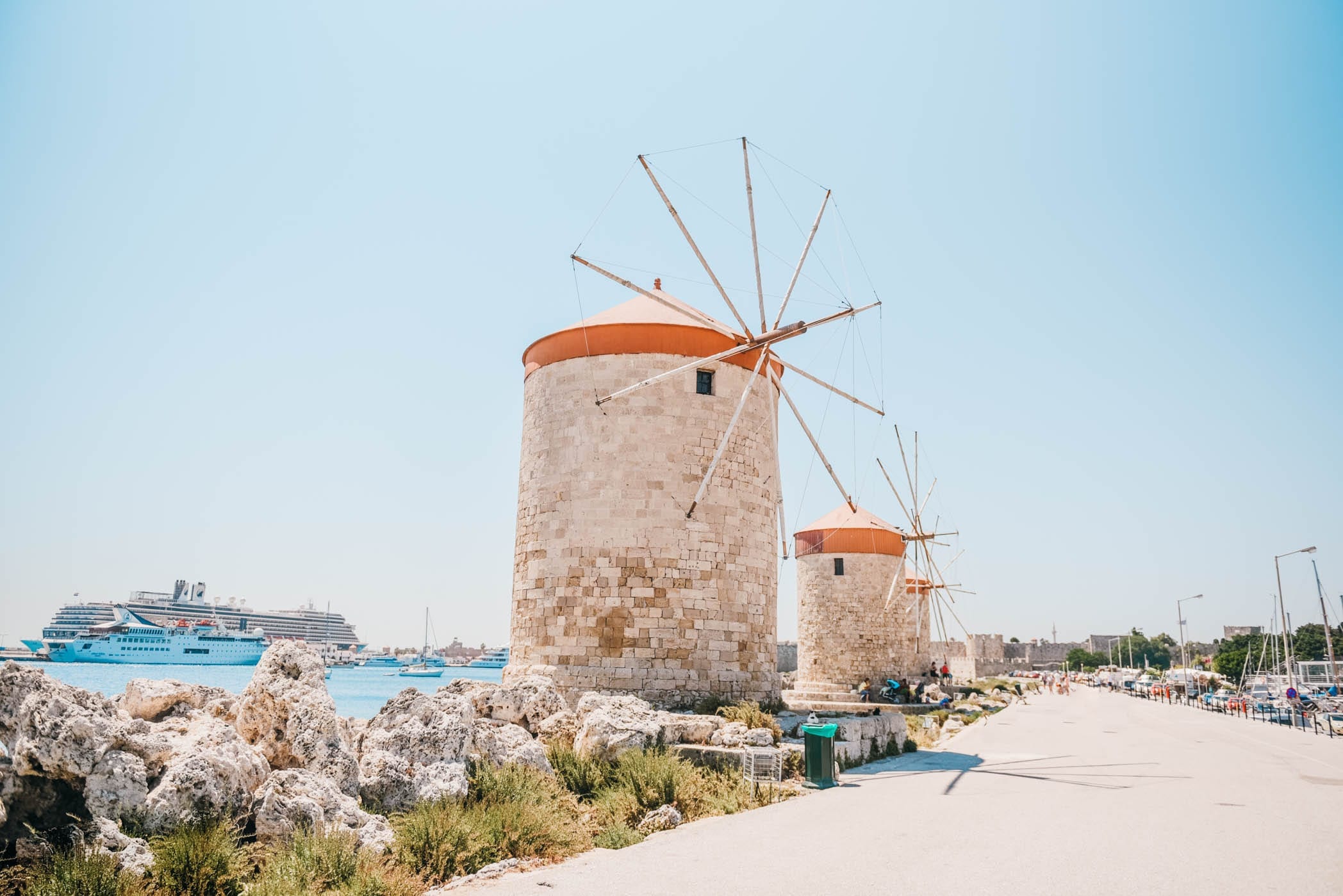
Back streets
Last, but certainly not least, the streets of the medieval city are enchanting by themselves.
We explored the city starting at 7 AM, and I wish we could’ve started earlier. Nothing was open. No one was awake, except for the cats inhabiting the doorsteps. It was magical to walk through a medieval city all by ourselves. Everywhere we turned there was a beautiful spot for another photo.
As the day progressed, shops started to open and the smell of breakfast and coffee filled the air. Piquing our appetite. We snagged a quick bite and went back into the city to explore. Not soon after, more tourists were sharing the streets crusaders used to walk with us.
By lunchtime, the summer sun was melting all of us, so it was necessary to stop in a small shop for a cold drink. We finished our self-guided tour of the city after we were rehydrated.
All in all, The Medieval City of Rhodes holds something for everyone.
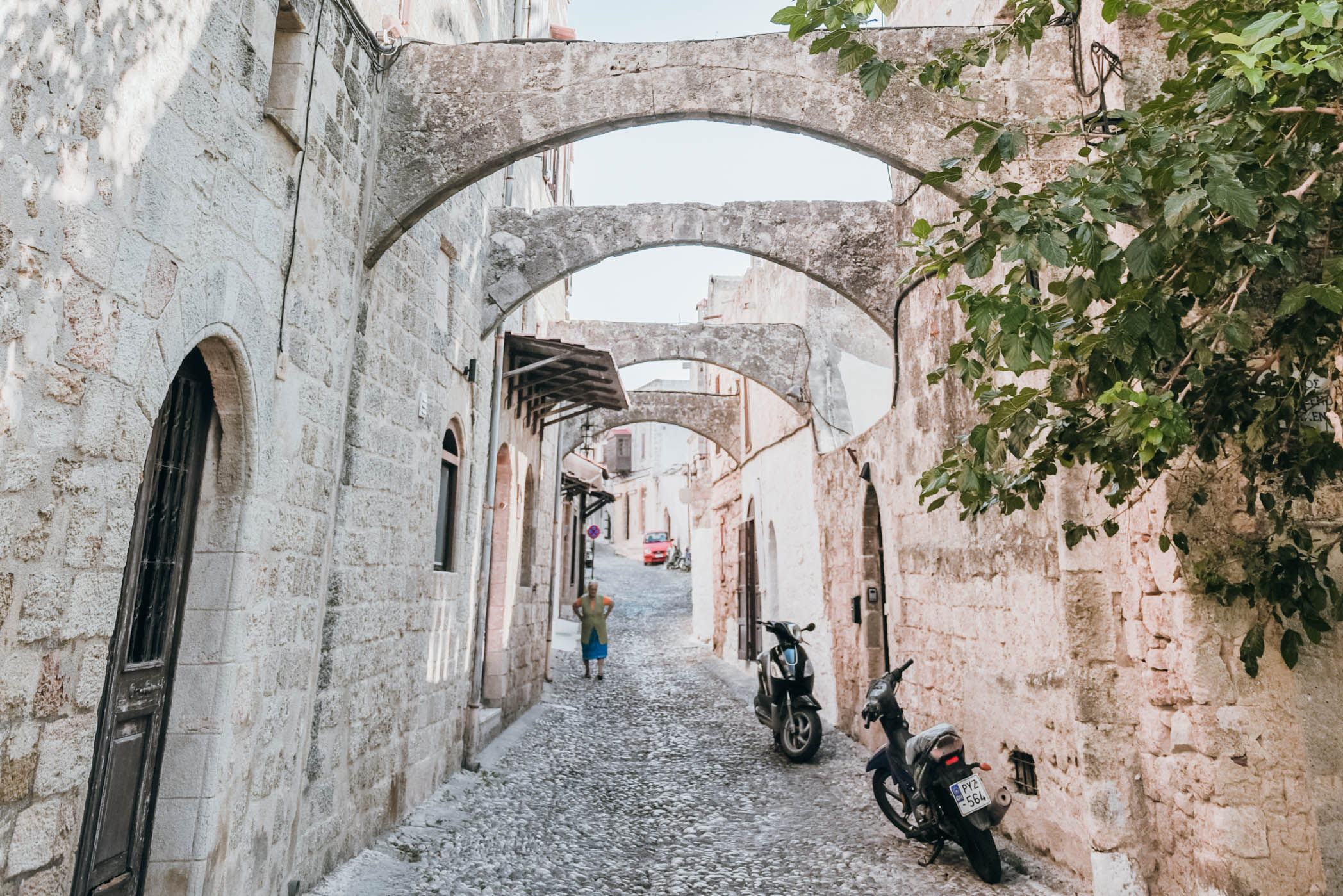
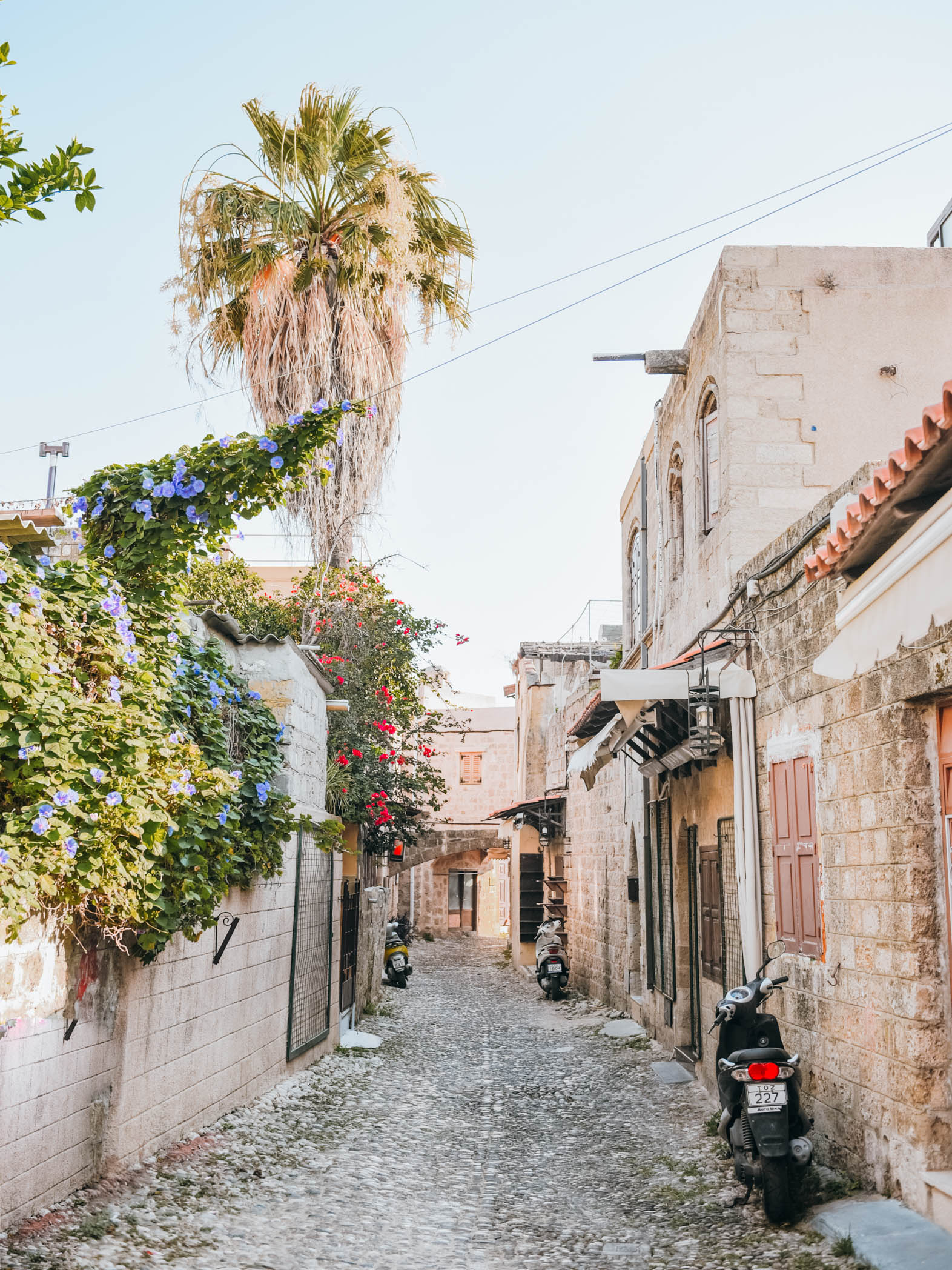
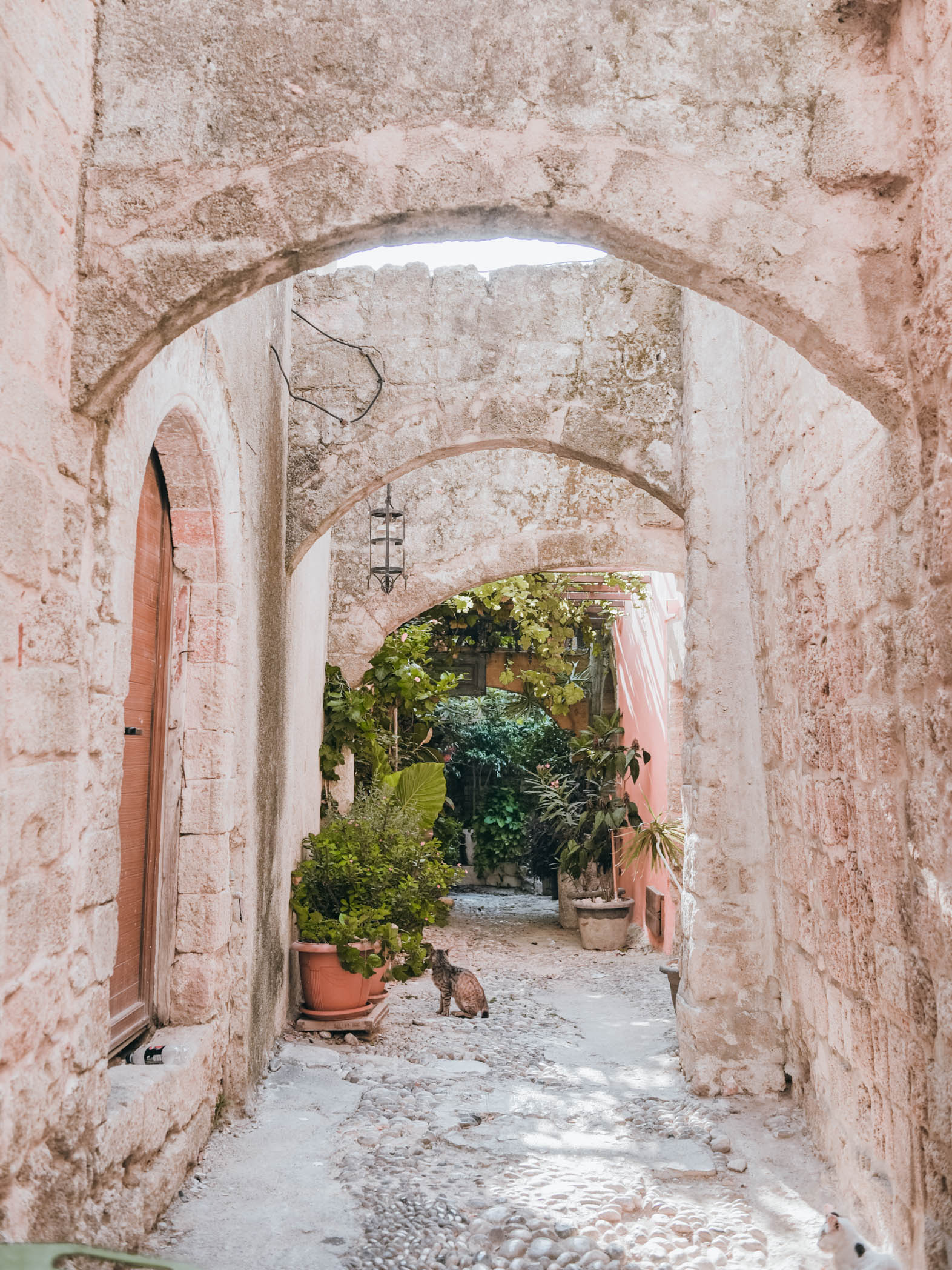
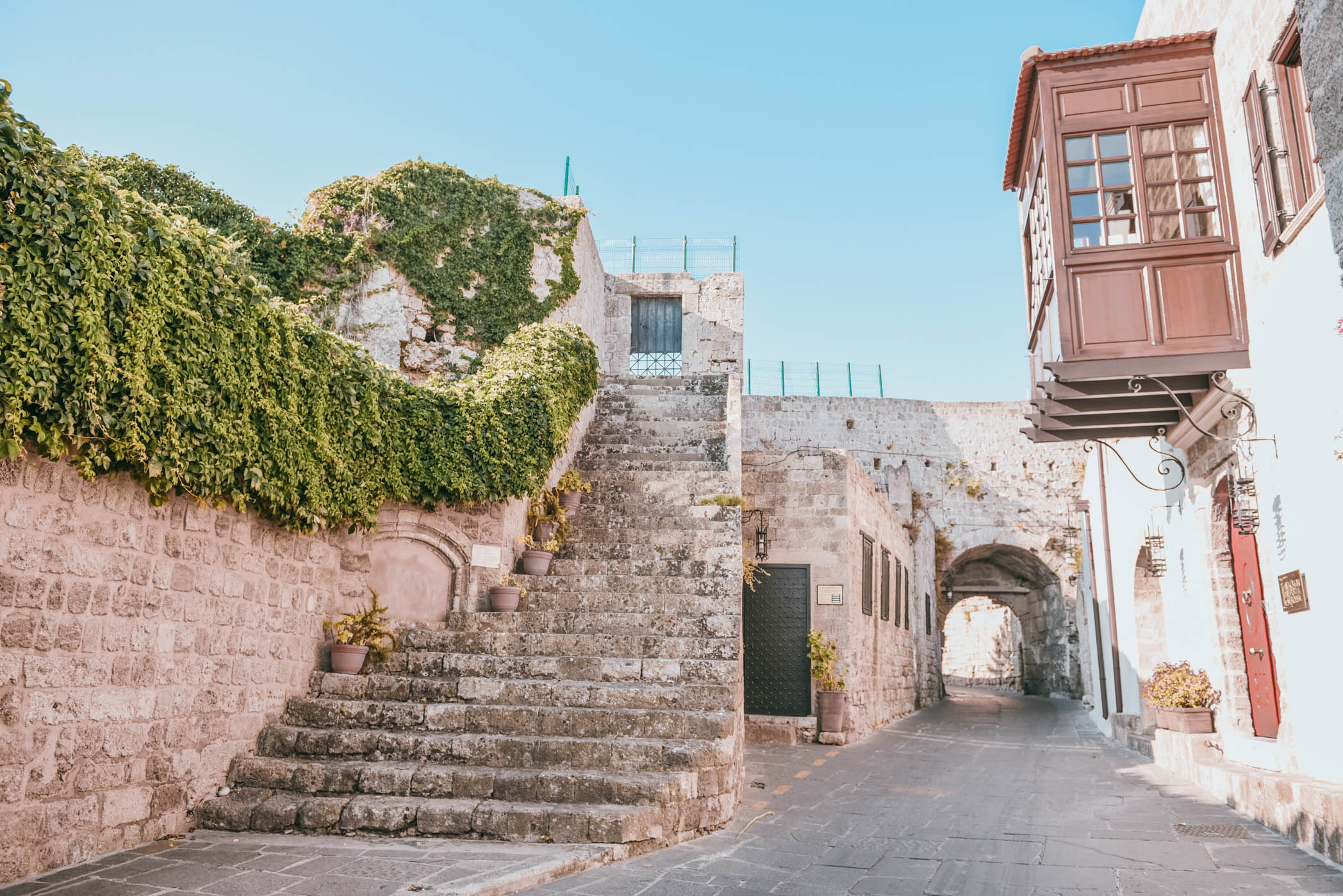
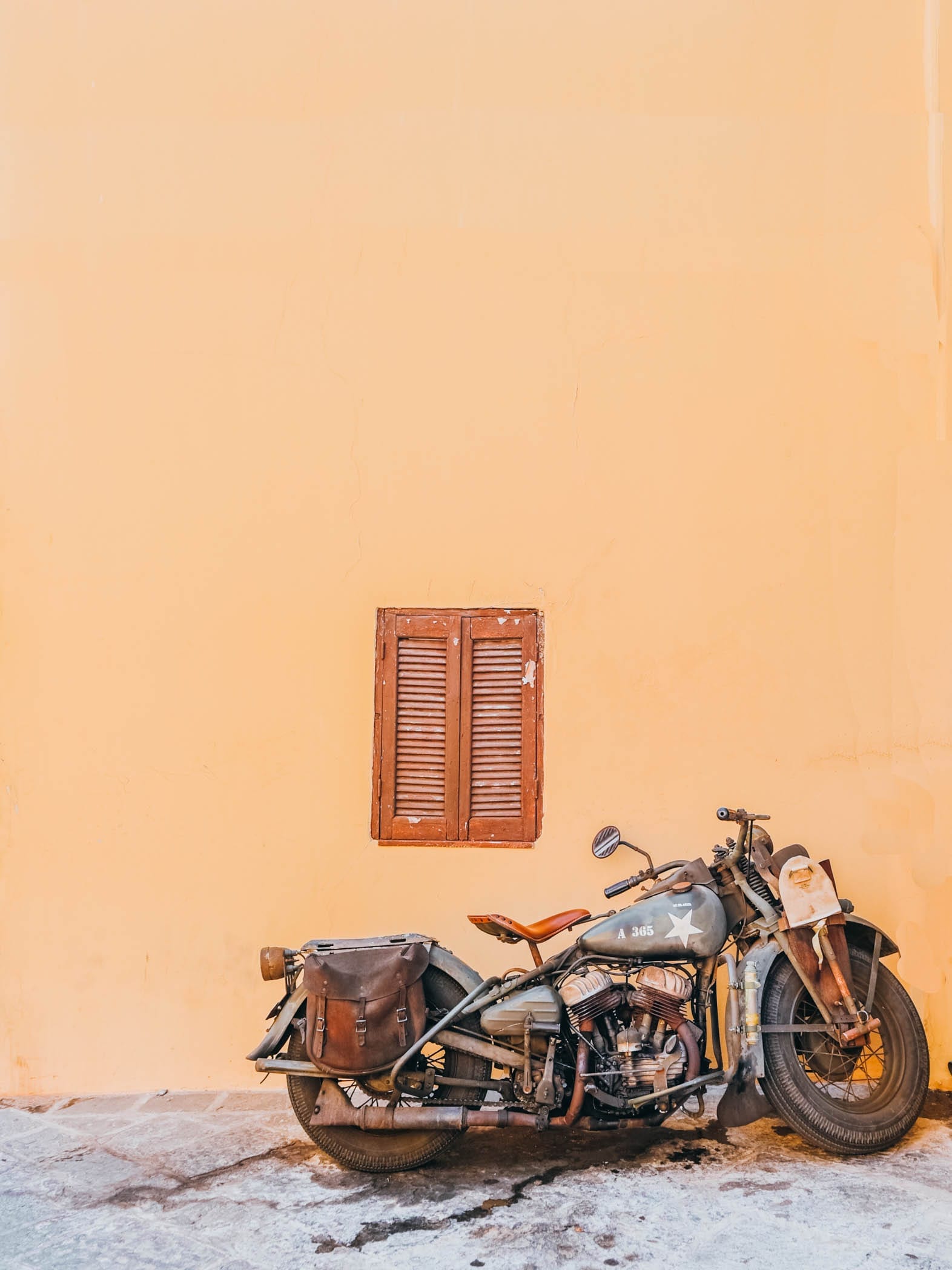
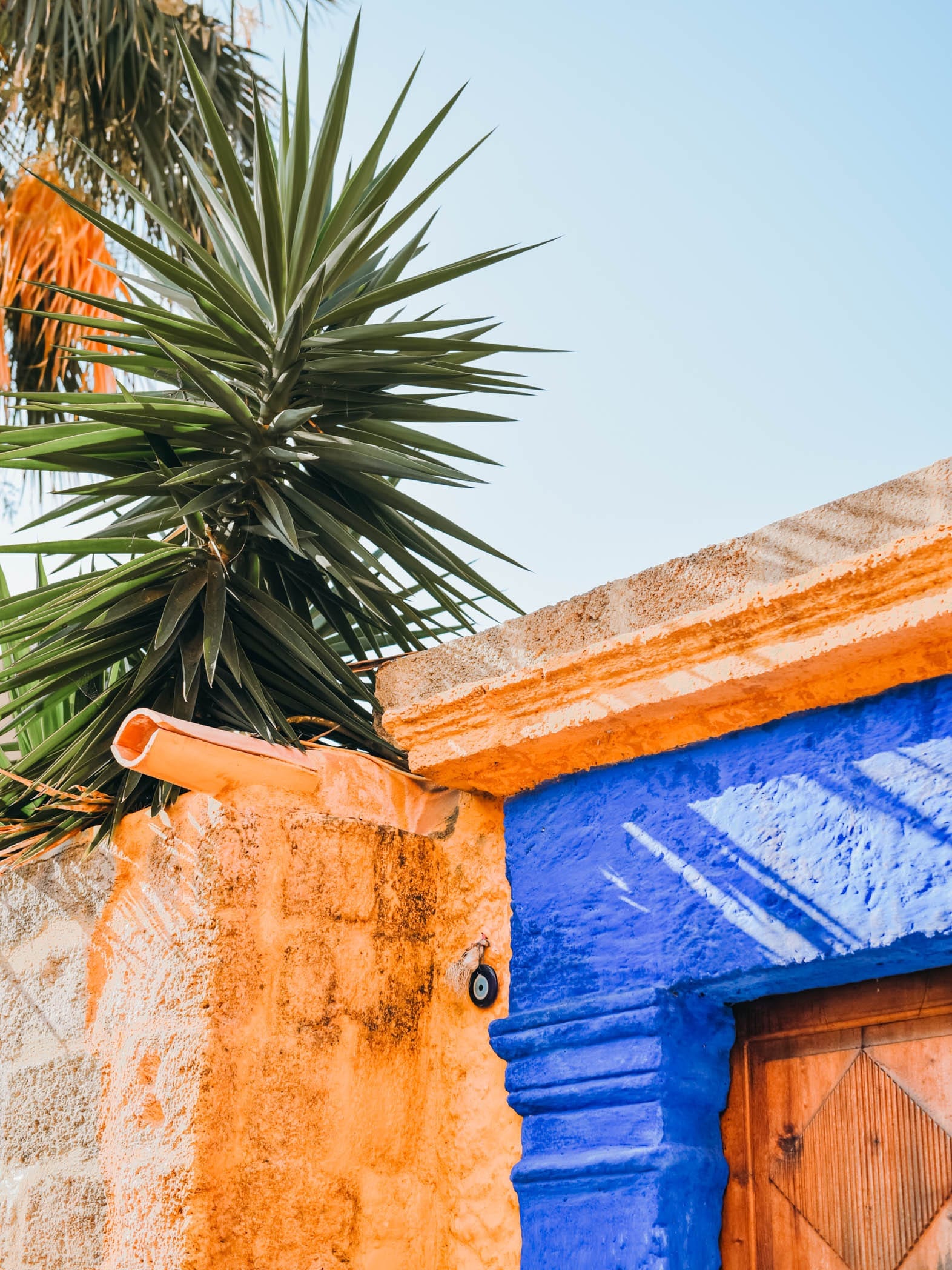
Is there anything I left out that is a must see in the Old Town of Medieval Rhodes?? If you’ve never been, which place are you most interested in seeing? Let me know in the comments below. If you want to read more on what to visit with the same vibes as Rhodes Old Town, read our blogs here.
Angie xoxo

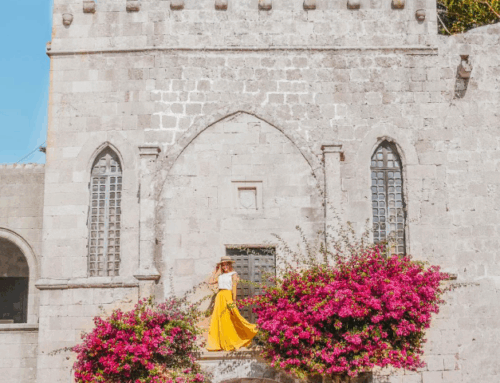
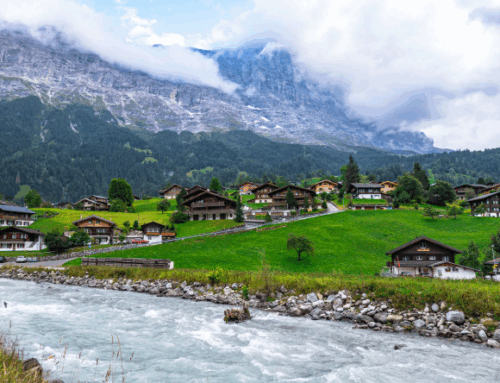

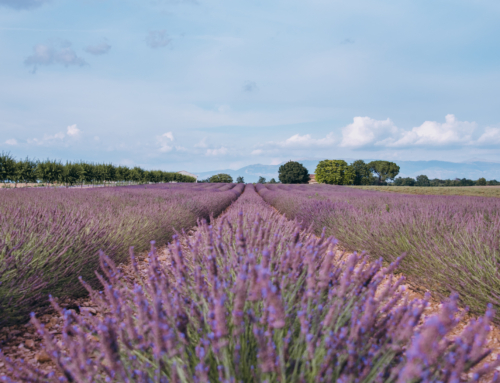
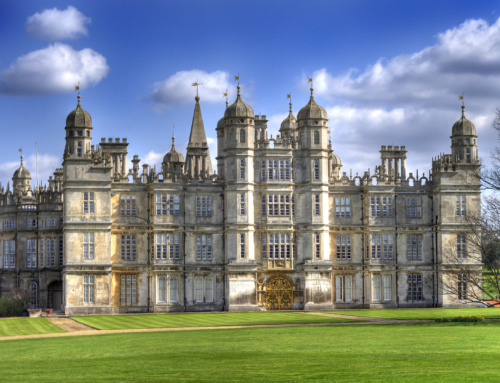
[…] Image Source: The Lovely Escapist […]
I loved Rhodes! The entire island was beautiful.. There were SO MANY CATS though lol.. Mostly noticed down by the harbour.
You’re such an inspiration, I mostly enjoy your transparency and kind heart. Keep sharing these beautiful locations with us.
This looks magical!! Hopefully I’ll be able to go here one day. Loving your blog ~ can’t wait to read more!
Very nice to read. Lovely pictures. I am thinking to go to Cyprus and Greece this year. Want to see many islands of Greece. They are amazing!
This guide makes me want to book a trip today! I had no idea what was even in Rhodes, how gorgeous!
This is a nice blog post and the info about those spots in Rhodes is so handy. Plus, as usual, your photos are incredibly dreamy and inspo, Angie!
Keep posts like this coming!
Oh, so many nice places 🙂 I haven’t been to Rhodes Old Town when I was there, what a shame, hut it was too far to drive from the part of the island I was on.
Good reason to come back when I see your pictures and tips.
Rhodes is a big island so to see everything definitely would require more time and a car. 🙂 I only was able to visit Rhodes Old Town but hopefully next time I’ll get to see more!
What a beautiful city! I cannot wait to start traveling internationally to see all of these beautiful cities you share! Thanks for being an inspiration!
Wow! Now Rhodes is on my bucket list! love medieval cities! It kind of reminds me a little of Toledo in Spain! And love how you captured the city as always!! your photos are my favorite part !
I’ve always wanted to visit Toledo! Definitely on my travel bucketlist. 🙂
Whaaat?! This place is like out of this world and it’s perfect for pictures. I’d love to visit one day. I guess it would be awesome experience! ?
Also I admire your hard work, you described everything in details. Very good?
(greis.gres) I want to know if one you would visit Albania and maybe I can meet you ?
That place is WONDERFUL ?! I will visit on day Medieval city of Rhodes and I will share all my adventures here on my I ig page .? I love traveling so now This place is in my list ?
P.s All your travel photos are amazing ? Ily ?
Wow ? this place is AMAZING ! I will visit the Medieval Rhodes and I will share my photos on my ig ?
WOW this is such an incredible location! Thank you so much for sharing!
Incredible! We always expect Greece to have ancient ruins from their times such as the Parthenon but there is much more!
Happy to know you managed to shot that very nice picture of you. Sometimes you get in very annoying situations due to other people!
There’s definitely way more ruins than just on Greece’s mainland that have yet to be popularized by tourists. 🙂 It’s exciting to know there are so much more historical sites to explore.
Such gorgeous, old architecture and captured so beautifully! I’m adding to my list of places to visit! 🙂
I’m so glad to hear that Liz! Thanks for sharing. 🙂
Thanks for sharing this! I honestly wasn’t familiar with this medieval city but am now adding it to my list for Greece. I will probably end taking an unreasonable amount photos along the Street of the Knights…coz Game of Thrones vibes!
That Street of Knights is definitely a MUST! Especially for some awesome GoT type pictures! It’s definitely not as popular as some other Greek Islands but it should be! It was our favorite place in Greece and quite possibly for the entire Mediterranean.
Thanks for this resourceful guide, Angie! Going to bookmark it
I had no idea about this beautiful medieval city. The only medieval town I had visited is Girona which is close to Barcelona in Spain. I find medieval towns so fascinating and your post definitely inspired me to put Rhodes on my list. I found Ippoton street the most fascinating. Thanks for sharing all the tips ?
PS – the story about those kids not leaving you alone with scary and hilarious at the same time. Keep up the great work ?
Yay! So happy to hear you’ve decided to add Rhodes to your travel list. During our entire time in the Mediterranean, Rhodes was actually our favorite place! We wish we had more time to explore the whole island since there are amazing beaches and other towns to explore. Maybe next time! Just be sure to give yourself a few days if you decide to go! 🙂
These pictures are absolutely stunning!!! I love all tips and info here about your adventures, thank you so much for sharing!
Happy to share! And I’m so glad you enjoyed the information! Rhodes is such an underrated, but incredible Mediterranean dream.
A girl after my own castle heart! This one is just as amazing as that resort you blogged about with the ruins!
What a great blog post! I’ve never heard anything abot Rhodes before, but, the way you describe this place, just made me want to visit it!
P.s. I really love all these shots